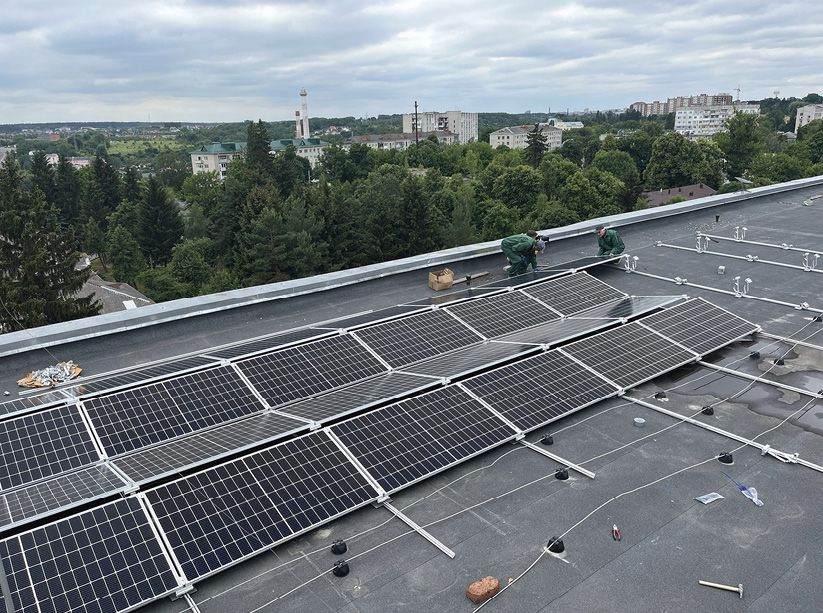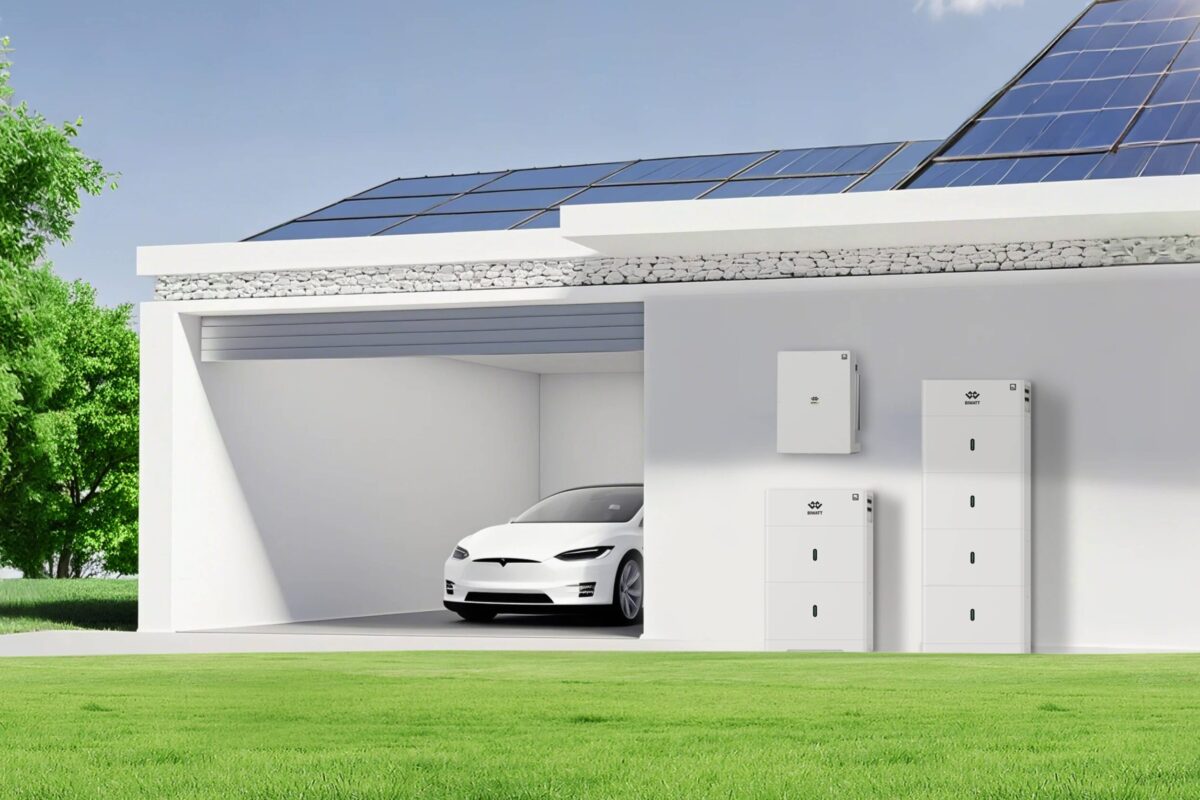Renewables are increasingly the answer to Ukraine’s energy woes. Widespread blackouts last fall and winter triggered a solar boom in the country, as households and businesses struggled to find solar-charged batteries. The solar frenzy heralded humanitarian programs, primarily focused on keeping the lights on for the critical civil infrastructure: schools, hospitals, and kindergartens.
Solar, as the most easily deployed clean energy source, can support Ukraine in its hour of need, says Máté Heisz, director of global affairs at industry group SolarPower Europe. “Ukrainian people continue to live in fear and feel the daily effects of the attacks on their homes, hospitals, and schools,” he tells pv magazine.
SolarPower Europe, Bundesverband Solarwirtschaft (BSW), and its Ukrainian PV industry association peer launched the “Solar Supports Ukraine” campaign in December 2022 to support critical infrastructure in the wake of constant, prolonged outages.
SolarPower Europe member BayWa r.e. has made a generous donation to fund a solar project to meet all the power needs of Kharkiv Hospital No.17. The German developer is due to work with campaign implementation partner the RePower Ukraine Foundation, on the project.
“Energy Act for Ukraine Foundation and Menlo Electric will also jointly develop a solar and storage installation for the Bucha, Lyceum No. 3 school, one of the projects which we are fundraising for,” says Heisz. “The two organizations will equip up to 10 Ukrainian hospitals and schools with solar, with a total output of 300 kW.”
That solar system was financed by donations from BSW members including SMA, Qcells, BayWa r.e., and IBC Solar. “Despite the substantial amount we have received, we are still relentlessly pursuing more corporate donations,” says Heisz. “In particular, we are still missing about €40,000 ($43,600) for our next project, the Chernihiv Regional Hospital Project. With this money, our implementation partner, the Energy Act for Ukraine Foundation, would be able to construct a 73.6 kW hybrid solar system which will partially cover the hospital’s electricity supply and, critically, its surgery and intensive care units, where lifesaving work is being performed.”
Heisz highlights the recent destruction of the Nova Kakhovka dam and hydroelectric power station in Kherson which forced thousands to evacuate, and halted access to electricity. “That’s why we are still asking people to donate to our Solar Supports Ukraine campaign and to help keep the lights on in Ukraine,” he says.
Making a difference
Other solar aid initiatives also focus on critical infrastructure. “The last heating season, in the midst of a full-scale war, showed how important it is for hospitals and water utilities to have their own sources of electricity,” says Dmitro Sakhalyuk, technical expert of the Solar Aid for Ukraine initiative and for NGO Ecoclub.
As of June, the initiative was completing three solar plants for hospitals in Dubno, Zhytomyr, and Sumy. “We have developed design and estimate documents and will soon announce tenders for the construction of solar plants for water utilities in Zviahel, Zhytomyr region; and Brody, Lviv region,” says Sakhalyuk. “In addition, in Kremenchuk, where we plan to build a solar power plant for a hospital, we will soon develop design and estimate documentation. In less than a month, we will start constructing three more solar power plants.”
Ecoclub has received more than 200 requests for solar plants from Ukrainian municipalities and the number keeps growing. “We are looking for partners who will provide equipment, implement turnkey projects, or finance them,” Sakhalyuk says, adding the immediate target is to bring 118 kW of equipment from Europe with negotiations ongoing for twice that generation capacity.
Solar Aid for Ukraine aims to show renewables are affordable and to encourage communities to work towards energy independence. The government last year outlined ambitious clean power targets in its national recovery plan. Solar should play a vital role in a plan many say should be instituted immediately.
“Ukraine’s post-war sustainable recovery has already begun,” says Sakhalyuk. “So it is the best time for international partners to cooperate with Ukrainian municipalities and explore different models of financing clean energy projects.”
Pumping in cash is not the only solution, Sakhalyuk adds. “Municipalities in Ukraine need capacity-building assistance,” he says. “By working together with international partners, local officials and experts can learn from international experience, gain new skills, and enhance their knowledge in various areas including governance, urban planning, and economic development. Such cooperation will help Ukraine accelerate its recovery process.”
Olena Koltyk, head of the Ukraine Support Team (UST), tells pv magazine, “Ukraine definitely needs more solar aid as the country has great potential for it – especially in southeast regions which are severely suffering because of war – to make them resilient. Moreover, it has to be not only the donations of equipment but help with devising technical projects and installation, because communities do not have the capacity and expertise.”
UST works to equip hospitals, schools, and other critical infrastructure with hybrid solar. “Installation of solar is more reasonable in Mykolaiv than in Chernihiv region, due to better insolation,” says Koltyk. “In addition to hybrid solar plants, it makes sense to install solar collectors for hot water and heat supply. At the moment, we are looking for donors to finance these projects. Several projects on the installation of solar in hospitals and schools have already been implemented in Ukraine but this is extremely insufficient – there may be thousands of such projects.”
Solar Supports Ukraine
Taming chaos
International solar aid for Ukraine is chaotic, however. No one knows where solar panels and batteries are going so it is not clear how effective they will be, says Oleksiy Orzhel, chairman of the Ukrainian renewable energy association. Orzhel stresses, though, how grateful Ukrainians are for the aid.
The nation needs systematic aid for industry with Orzhel stating there is practically none. Guarantees to foreign investors are not being fulfilled, he says.
This “calls into question the future development of the market,” says Orzhel. “In this regard, there are ideas for foreign donors and investors to finance a fund that would provide a certain level of guaranteed payments for investors in renewable energy facilities. Such a tool would partially allow them to pay off loans, cover operating costs and costs of repair and restoration after emergency modes of the grid.”
Historic international programs to support industry have been halted by the war. A Ukraine Recovery Conference held in London in June discussed insuring such programs but it is premature to discuss action, says Orzhel.
Humanitarian aid from the EU and its member states to fund autonomous solar plants in areas where the grid has been disabled is seen as a temporary or medium-term solution. Such projects are combined installations enabling a hospital, school, or administrative building to have electricity, at least during daylight hours.
“At the moment, at the level of certain tasks and strategies, the possibility of investing in decentralized renewables generation is being considered,” says Orzhel. “At the same time, in connection with the constant military operations – and every day the Ukrainian energy industry is under fire – there is no investment in the energy sector.”
Supporting household solar is attractive since it brings visible results at a minimal cost. A rooftop solar panel installed at the hospital could save patient lives during outages every day. Helping with the development of the industrial sector is a more long-term strategy, requiring substantial funds and effort, but it could eventually become a game changer for the country’s energy security.
*Currency translation made on 21/08/23.
This content is protected by copyright and may not be reused. If you want to cooperate with us and would like to reuse some of our content, please contact: editors@pv-magazine.com.



9 comments
By submitting this form you agree to pv magazine using your data for the purposes of publishing your comment.
Your personal data will only be disclosed or otherwise transmitted to third parties for the purposes of spam filtering or if this is necessary for technical maintenance of the website. Any other transfer to third parties will not take place unless this is justified on the basis of applicable data protection regulations or if pv magazine is legally obliged to do so.
You may revoke this consent at any time with effect for the future, in which case your personal data will be deleted immediately. Otherwise, your data will be deleted if pv magazine has processed your request or the purpose of data storage is fulfilled.
Further information on data privacy can be found in our Data Protection Policy.